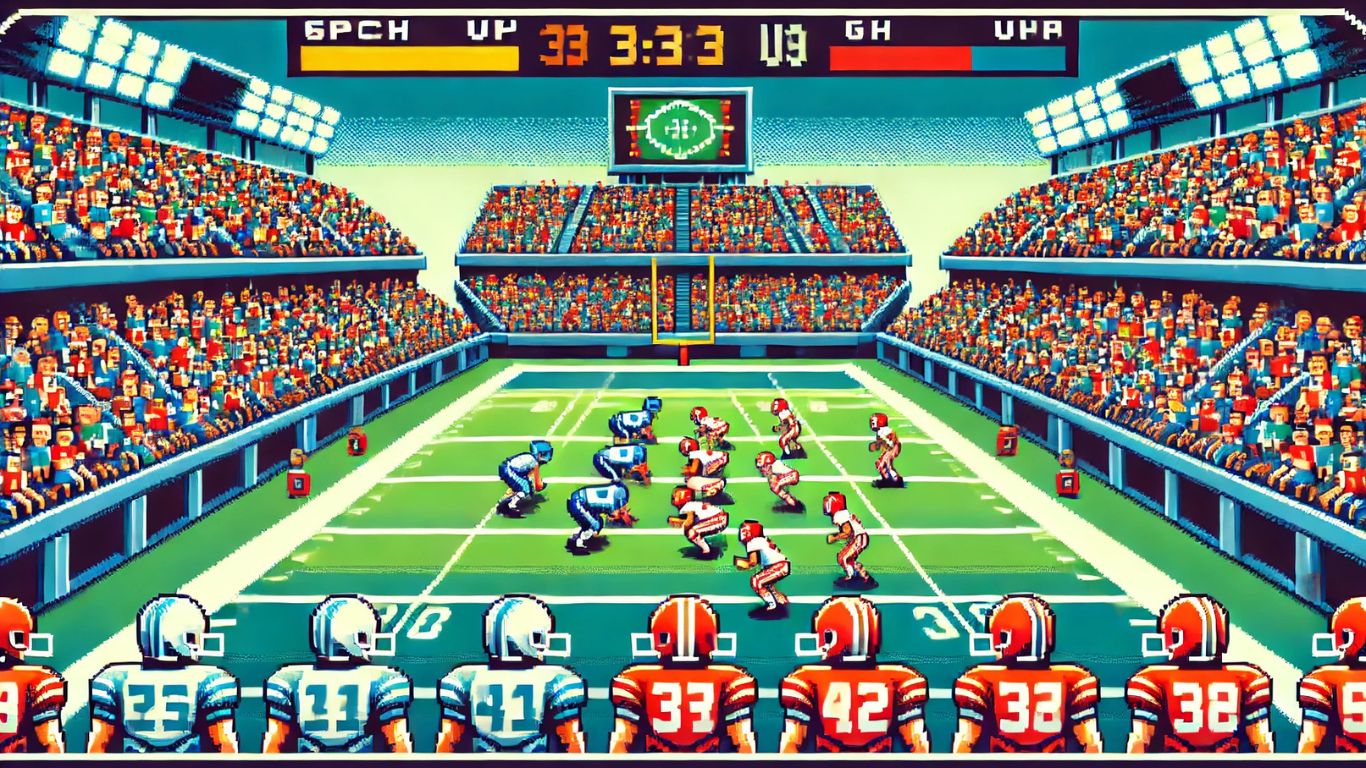Sports Harmonicode: The Future of Athletic Training

In the world of athletics, where precision and performance matter most, innovations like sports harmonicode have taken center stage. This revolutionary concept combines cutting-edge technology, sports science, and data analytics to unlock an athlete’s full potential. With its growing popularity, coaches, trainers, and athletes are embracing its methodology to refine skills, prevent injuries, and achieve peak performance. This article delves into everything you need to know about sports harmonicode, exploring its impact, applications, and the science behind its success.
What is Sports Harmonicode?
The term sports harmonicode refers to an innovative system that harmonizes athletic performance using advanced algorithms, biomechanics, and real-time data. It focuses on analyzing movement patterns, physiological metrics, and training variables to create a comprehensive strategy tailored to individual athletes. The approach bridges the gap between science and sports, enabling athletes to enhance their efficiency and reduce risks.
Rooted in the principles of sports science, sports harmonicode blends technology with natural human mechanics. By doing so, it uncovers inefficiencies, helping athletes fine-tune their performance. Its name reflects the idea of creating harmony between physical effort and measurable outcomes, a concept that resonates deeply with the principles of modern athletics.
How Sports Harmonicode Works
At the heart of sports harmonicode lies advanced data collection and analysis. Motion-capture technology, wearable devices, and performance sensors are used to track every aspect of an athlete’s movement. For instance, stride length, muscle activation, joint angles, and even breathing patterns are recorded. These metrics are then processed through algorithms that identify inefficiencies or areas needing improvement.
Sports harmonicode emphasizes real-time feedback. Through mobile apps or wearable screens, athletes and trainers receive instant updates, allowing for adjustments during practice sessions. This immediate response helps in correcting form, optimizing energy use, and minimizing repetitive strain on muscles.
Key Components of Sports Harmonicode
Several core components define the functionality of sports harmonicode. Each plays a vital role in creating a well-rounded system that fosters athletic growth.
- Biomechanical Analysis: This involves studying how an athlete moves. Any imbalances or misalignments are flagged for correction.
- Data Integration: Multiple data points, such as heart rate variability, muscle recovery, and speed, are combined for a holistic view.
- Personalization: Sports harmonicode tailors strategies to each athlete’s unique strengths and weaknesses.
- Predictive Insights: Algorithms predict future performance trends and potential injury risks based on historical data.
- Training Optimization: It ensures that workouts focus on enhancing specific skills without overexerting the body.
These elements come together to form a cohesive approach, making sports harmonicode invaluable for professionals and amateurs alike.
Applications in Different Sports
The versatility of sports harmonicode makes it applicable across various disciplines. Athletes in running, swimming, football, and even niche sports like archery have reaped its benefits.
In team sports like basketball or soccer, the technology is used to evaluate player movements, improve coordination, and design strategic plays. Runners rely on sports harmonicode to refine their strides, minimize energy wastage, and avoid injuries. Swimmers, on the other hand, use it to perfect their strokes and monitor underwater mechanics.
Interestingly, sports harmonicode also aids coaches in designing sport-specific drills. By understanding an athlete’s biomechanics, coaches can create exercises that build on strengths while addressing weaknesses.
The Role of Artificial Intelligence in Sports Harmonicode
Artificial intelligence (AI) is a game-changer in the development of sports harmonicode. Machine learning algorithms process large volumes of data quickly, identifying patterns that might go unnoticed by the human eye. AI helps trainers understand subtle changes in performance, such as slight deviations in form or stamina dips during a session.
Moreover, AI-powered systems provide suggestions for optimal training schedules, dietary adjustments, and recovery techniques. With this added layer of intelligence, athletes can focus on their goals while technology handles the finer details.
Benefits of Sports Harmonicode
The adoption of sports harmonicode has introduced numerous advantages for athletes and trainers. Here are some of the most noteworthy benefits:
- Enhanced Performance: By identifying inefficiencies, athletes can make targeted improvements that lead to better results.
- Injury Prevention: Continuous monitoring helps detect stress points or overuse injuries before they escalate.
- Efficient Training: With data-backed insights, training sessions become more purposeful and less time-consuming.
- Mental Confidence: Athletes feel more assured knowing they are backed by a system that maximizes their potential.
- Longevity in Sports: Preventing injuries and optimizing recovery ensures athletes can enjoy longer, healthier careers.
By addressing these critical areas, sports harmonicode becomes an indispensable tool in modern training regimens.
Challenges in Adopting Sports Harmonicode
While the benefits are undeniable, there are challenges associated with implementing sports harmonicode. One of the primary concerns is the cost. High-tech equipment, wearable sensors, and software subscriptions can be expensive, making it less accessible to amateur athletes or smaller organizations.
Another challenge lies in the learning curve. Coaches and athletes need to familiarize themselves with the technology, which can be time-intensive. However, as the system becomes more user-friendly, these barriers are gradually diminishing.
The Science Behind Sports Harmonicode
The science driving sports harmonicode is rooted in biomechanics, kinesiology, and physiology. These disciplines study the interplay between movement and muscular function, forming the backbone of this technology. For example, biomechanical analysis assesses how force is distributed during a sprint or jump, while physiological data evaluates how the body responds to stress.
By combining these fields, sports harmonicode creates a synergy that bridges theoretical science and practical application. Athletes benefit from a deeper understanding of their bodies, enabling them to push boundaries without compromising safety.
Real-Life Success Stories
The effectiveness of sports harmonicode has been demonstrated through real-life case studies. Elite athletes across various sports have integrated this system into their training with impressive results.
For instance, professional sprinters have reduced their lap times by analyzing stride patterns and foot placement. Similarly, tennis players have improved their serve accuracy and racket speed by optimizing their biomechanics. Even youth athletes have used sports harmonicode to enhance skills while building foundational strength safely.
Future Trends in Sports Harmonicode
The future of sports harmonicode is bright, with advancements expected in multiple areas. One key development is the integration of virtual reality (VR). Imagine athletes practicing in simulated environments that mimic real-world scenarios, providing unmatched training precision.
Additionally, advancements in wearable technology are anticipated to make sports harmonicode more accessible. Compact, affordable devices capable of real-time data analysis will likely emerge, enabling widespread adoption.
Machine learning models are also evolving, allowing for even more precise predictions and recommendations. These developments promise to make sports harmonicode an essential part of every athlete’s toolkit.
Common Misconceptions
Despite its growing popularity, sports harmonicode is sometimes misunderstood. A common myth is that it replaces human coaching. However, this system is designed to complement coaches, not replace them. It provides valuable insights, while coaches interpret the data to create actionable strategies.
Another misconception is that it’s only for elite athletes. While professionals benefit significantly, amateurs and hobbyists can also use sports harmonicode to stay active, avoid injuries, and achieve personal goals.
Incorporating Sports Harmonicode Into Everyday Fitness
Even casual fitness enthusiasts can leverage sports harmonicode to improve their routines. Apps and wearable trackers provide real-time feedback, helping users maintain proper form and track progress. Fitness studios are also beginning to incorporate this technology into group classes and personal training sessions.
Sustainability and Sports Harmonicode
In addition to enhancing performance, sports harmonicode is contributing to sustainability in sports. By reducing unnecessary strain on athletes, it minimizes the need for excessive medical interventions, conserving healthcare resources. Furthermore, innovations in recyclable materials for wearable devices align with eco-friendly goals.
FAQs
What makes sports harmonicode different from traditional training?
Unlike traditional methods, sports harmonicode relies on data and technology to analyze and enhance performance. It provides real-time feedback, personalized strategies, and predictive insights.Is sports harmonicode suitable for beginner athletes?
Yes, sports harmonicode benefits athletes at all levels by improving efficiency, preventing injuries, and guiding proper technique.How affordable is sports harmonicode?
While initial costs may be high, the technology is becoming more affordable as wearable devices and apps evolve.Does sports harmonicode replace coaches?
No, it complements coaching by providing detailed data that helps trainers refine their strategies.Can sports harmonicode predict injuries?
Yes, it uses historical and real-time data to identify patterns that might indicate potential injury risks.Is the technology difficult to use?
Modern systems are designed to be user-friendly, making it easy for athletes and coaches to integrate them into training routines.










